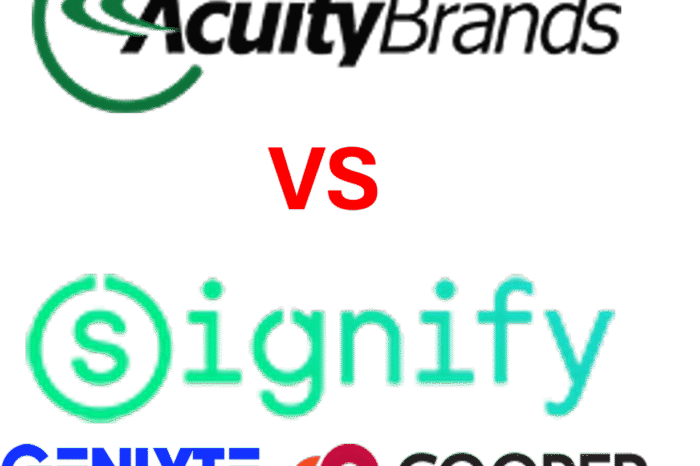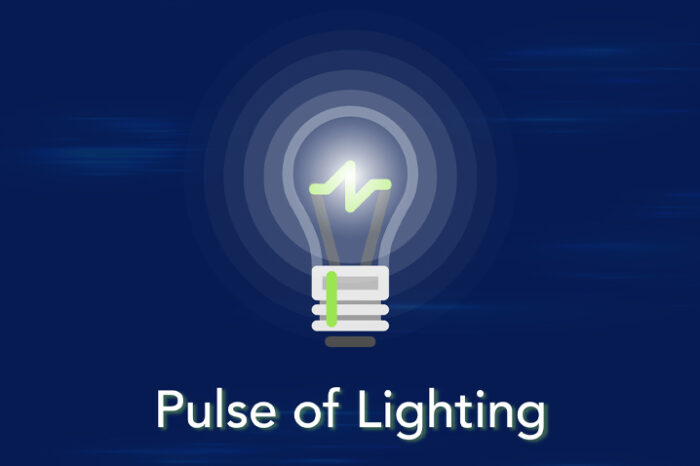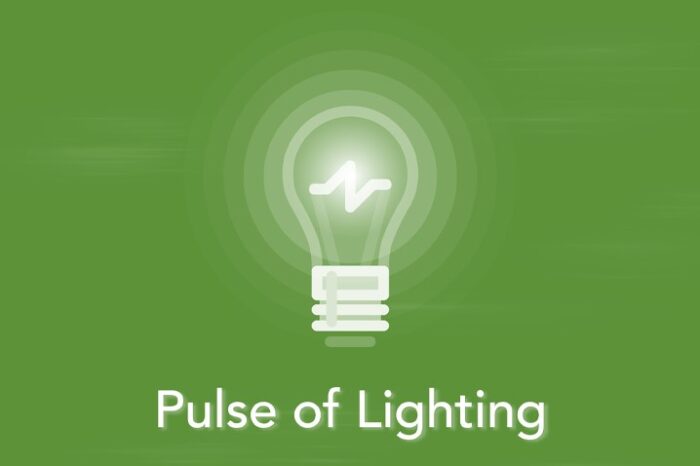Earnings Season … Acuity and Cree
 It’s the beginning of earnings season again and we’ve reviewed Acuity’s and Cree’s. It appears to be a tale of two companies. Both are having success in the LED space with Acuity’s net sales up 14% and Cree’s up 11%. The difference, from an overall sales performance and earnings per share is that Acuity is essentially a pure play on the lighting fixture business (and ancillary products / services) whereas Cree also has its LED components business which is essentially an OEM business. This is not to say one is better than the other as we’re solely focused on the affect on the lighting industry and the electrical distribution channel.
It’s the beginning of earnings season again and we’ve reviewed Acuity’s and Cree’s. It appears to be a tale of two companies. Both are having success in the LED space with Acuity’s net sales up 14% and Cree’s up 11%. The difference, from an overall sales performance and earnings per share is that Acuity is essentially a pure play on the lighting fixture business (and ancillary products / services) whereas Cree also has its LED components business which is essentially an OEM business. This is not to say one is better than the other as we’re solely focused on the affect on the lighting industry and the electrical distribution channel.
Let’s look at key points of their analyst calls (comments in italics is ET commentary)
Key highlights from its earnings call
- Net sales up 14%
- 11th quarter of double-digit volume growth (it’s an indication of LED adoption, taking share, executing on their business plan)
- Acuity mentions “continue to invest in areas with significant future growth including SSL and lighting controls portfolio as well as building automation and IoT solutions (reference our posting on The Change in the Lighting Market for additional insights)
- The company closed the quarter with $560M in cash after acquisition expenses, and generated $51M in net cash during the quarter. (the big benefit is the ability to be opportunistic and invest in new products as well as acquisitions. Theoretically they could invest in end-user marketing to further accelerate LED adoption (and may be doing it via end-user direct salespeople vs reps in some channels)).
- Sales of LEDs grew 41% during the quarter (distributors – what did your LED sales grow by? Should you be tracking this?. Also, compare this to Cree’s growth of 11%, which is all LED-related.)
- LED sales now represent more than 50% of Acuity sales.
- They are adding people to support their solutions strategy (consider what this means for distributors. You’re either in the solutions game or you are not. And solutions is more than recommending an energy / lighting upgrade.)
- The offer 1.7M SKUs
- Acuity is seeing significant growth, albeit from a small base, in their “holistic integrated solutions approach.” They’ve converted 10M+ square ft of space to collect data and enable applications. This is the Internet of Things (IoT) at work. (Progressive, lighting-inclined, distributors could see an opportunity here. Distributors should ask for case studies to market to targeted customers so they can be involved).
- Seeking to continue to diversify while strengthening the foundation and platform, which is built on lighting.
- Proactively mention that they intend to make additional strategic acquisitions
- Acuity views Juno as a “jigsaw puzzle coming together perfectly” with many of Juno’s strengths supporing areas where Acuity wasn’t as strong.
- Renovation continues to be a “huge opportunity”.
- Reportedly the outdoor lighting market is only 10% converted to LED; the indoor lighting market is only 3% converted.
- Expect continued LED component cost decreases with savings being passed on, which helps gross margins (and this hurts Cree which is hoping that as price goes down they can take share and generate incremental sales dollars that will outpace the declining profit dollar loss)
- Seeing improvements in the educational market
- Distech goes to market through system integrators. (could be an opportunity for distributors to engae as combining them with lighting agents / lighting products can create additional opportunities). Geometri has its own channel … VARs.
- In the new tax extender legislation Acuity mentioned, based upon an analyst question, section 179D with energy efficiency and more of a focus on controls and lighting. Acuity also mentioned “They (the government) also renewed the tax, accelerated tax benefit that someone can get from putting in more energy efficient lighting controls as well as other energy-efficient areas. These should be promoted by distributors.
What are your thoughts regarding Acuity / Lithonia? What are you experiencing in the field?
The following are highlights from Cree’s second quarter earnings call (and we’ve focused solely on the fixture side of the business)
- Seeking to grow lighting business at a faster rate than LED components to improve company sales and profitability.
- Aside from a 11% year over year growth in the lighting segment, sequential growth was 3% to $255M for the quarter (so, in round numbers, Cree is doing about $900-$1B in lighting on an annualized basis.)
- Lighting margin is 28.5% (which is below Acuity’s)
- Cree is implementing a new ERP system for their lighting group in Q3, and Cree acknowledged the risk if there is an implementation challenge (Distributors beware!! You’ve experienced this before with other suppliers. Consider if you need to increase stock to cover sales.)
- Consumer lighting revenue was similar to Q1 (indicates that more of the growth is coming from the commercial side, albeit no mention if this is via distribution or direct sales)
- Cree’s second priority is innovation (first is “financial momentum”) and they reference their new product pipeline (interesting to note, Cree mentions focusing on pricing whereas Acuity talked more about strategy and their tiered solutions and Internet of Things initiatives)
- The product offering is expanding and the company is continuing to invest in its SmartCast line and lighting connectivity.
- Expects the North American LED lighting market to grow 20% +/- in calendar 2016 and expects that they will grow comparably.
- Here’s an interesting comment regarding Cree’s competition, “The traditional lighting companies continue to shift their business to LED technology with the big players as well as a number of the midsize lighting companies all now more than 50% LED. However, most of these lighting companies are focused on simply delivering an LED version of traditional fixtures. The more knowledgeable specifiers and end-customers are starting to recognize that LED technologies can do much more. They want more than just lower costs and energy savings from the LED lights. They want better light.” (This begs the question of “what is better light?” and can distributors market this concept and distributor salespeople sell the difference for Cree to be THE preferred line? Is Cree providing distributors with the marketing tools, and sales training, to enable this message to be delivered?)
- Company is positioned / positioning as a “lighting technology company” (whereas the sense from the Acuity call is that they are positioning themselves as a “lighting (or illumination) solutions company”)
- Some consideration is being given to targeted, complementary lighting acquisitions to fill in product holes.
- When looking at Cree’s top-line need to be cautious on comparing vs other lighting only companies as Cree also has its LED module business as well as its RF and power busiess.
- Cree is positioning its bulb business as a “premium” bulb and a “better quality of light” and hence is not seeking to be price competitive with some other LED bulbs in the consumer aspect of the market (and it should be noted that distributors may also be selling LED replacement or retrofit bulbs)
- Cree believes “people” (and companies) will pay a premium for “better light”. This begs the question of “Are distributors able to sell Cree for a premium, and hence generate incremental margin dollars?”
We hope the information helps and the commentary (italics) generates some thoughts for you. What are your impressions and field experience with these two companies?






















